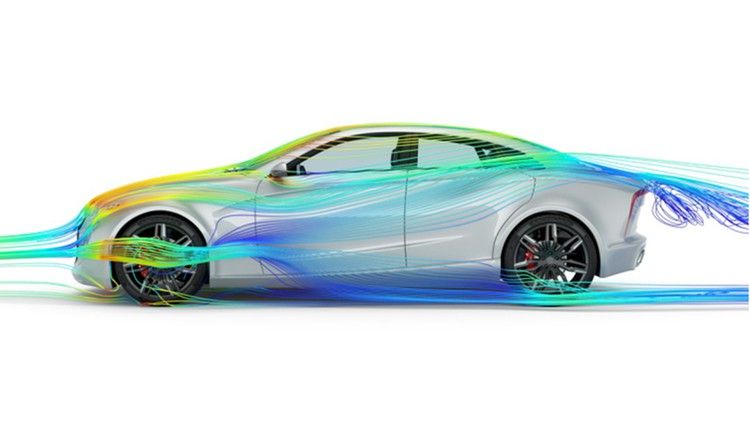

Advanced Fluid Mechanics with Engineering Applications.
Description
Dive deep into the intricate world of Fluid Mechanics and experience the awe-inspiring symphony of fluidic behavior that powers our natural and engineered systems. From the foundational concepts of Newton's laws applied to fluids to the complex calculations needed for engineering problem-solving, this course offers a comprehensive understanding of fluid motion and its critical role in both natural phenomena and man-made inventions. Grasp the nuances of continuity equations, momentum conservation, and the beauty of Navier-Stokes' equations, as they govern fluid flow.
Embark on a journey through the intricacies of turbomachines, exploring their classifications, working principles, and applications. Delve into the dynamics of boundary layers, from their genesis to their effect on the bodies in flow. Engage in the fascinating realm of external flow, uncovering the principles behind drag, lift, and the magnificent designs of airfoils. Finally, stands at the forefront of technological advancement with an introduction to Computational Fluid Dynamics (CFD), exploring the realm of numerical simulations that push the boundaries of engineering capabilities.
This course isn't just about learning theories but bridging the chasm between theory and real-world application. By the end, you will not only understand the mathematics behind fluid motion but will gain a profound appreciation for its relevance in shaping the world around us. Whether you aspire to design advanced aerostructures, engineer efficient transportation systems, or merely satiate an academic curiosity, this course is a key milestone in your journey of discovery and innovation.
Reference books for this course:
- Fluid Mechanics by Yunus A. Cengel, John M. Cimbala
- Fundamentals of Fluid Mechanics, 6th Edition By Munson
COURSE OUTLINE
Lecture-1 Introduction to Fluid
- The subject of Fluid Mechanics
- Laws in the scientific study
- Engineering approach of problem-solving
- Fluid definition
- Newton’s law of viscosity
- Newtonian and Non-Newtonian fluid
- Problems based on Newton’s law of Viscosity
Lecture-2 Continuity Equation
- Principle of conservation of mass
- Differential and Integral approach
- Eulerian and LaGrange's approach
- Inventory Equation
- Derivation of Continuity equation-Differential approach
- Conservation and Non-Conservation Forms of Continuity
- Material derivative
- Scalar and Vector field
- Acceleration field
Lecture-3 Momentum Equation
- Newton’s Second Law of Motion
- Body force
- Surface force
- Momentum Equation in differential form
- Stokes postulate
- Navier-Stokes Equation
Lecture-4 Application of Navier Stokes equation
- N-S equation as governing equation of fluid flow
- Application of the N-S equation for a steady and laminar fluid flow between two fixed infinitely long plates.
- Velocity profile
- Volume flow rate calculation from the velocity profile
- Local velocity, average velocity, maximum velocity
- Calculating Reynolds Number from the Velocity profile
Lecture-5 Application of Navier Stokes equation - Couette flow
- The physical meaning of the N-S equation
- Fully developed flow
- Application of N-S equation for a steady and laminar fluid flow between one fixed and one moving plate-Couette Flow
- Applications of Couette flow
Lecture-6 Reynolds Transport Theorem Derivation
- Control Mass (A System) and Control Volume
- Lagrangian and Eulerian Approach
- Extensive and Intensive property
- Derivation of Reynolds Transport Theorem (RTT)
- Interpretation of net flux term of RTT
Lecture-7 Reynolds Transport Theorem - Continuity Equation
- Reynolds Transport Theorem (RTT)
- Deriving Continuity Equation using RTT
- Mass flow rate, volume flow rate, and Average speed
- Differential and Integral Form of Continuity Equation
Lecture-8 RTT-Continuity Equation Numericals
- Continuity Equation in Integral Form
- Solving numerical problems using Continuity Equation
Lecture-9 RTT- Linear Momentum Equation
- Reynolds Transport Theorem (RTT)
- Deriving Momentum Equation using RTT
- Resultant Forces acting on a CV
- Momentum accumulation in a CV
- Momentum flow through a CV
Lecture-10 RTT- Angular Momentum Equation
- Reynolds Transport Theorem (RTT)
- Deriving Angular Momentum Equation using RTT
- Problem-based on Linear and Angular Momentum
- RTT for Moving and Deforming CV
Lecture-11 Kinematics of Flow-Flow Types
- Fluid Flow Visualization- Classics
- Streamline
- Path-line
- Streak-line
- Timeline
- Software for flow visualization (2dflowvis)
Lecture-12 Kinematics of Flow- Irrotational Flow
- The motion of fluid Element
- Transformation of a fluid element
- Angular velocity vector
- Vorticity Vector
- Irrotational flow field
Lecture-13 Kinematics of Flow- Stream function
- Visualizing velocity field-Java Applet
- Visualizing velocity field- Maple
- Stream function
- Change in the value of the stream function
- Problem with the stream function
- Stream function in polar coordinates
Lecture-14 Kinematics of Flow- Circulation
- Circulation
- Relationship between Circulation and Vorticity
- Stoke’s theorem
- Problem on Circulation
- The physical meaning of Divergence of a vector
- Circulation and Divergence in Java Applet
Lecture-15 Potential Flow- Velocity potential function
- Velocity Potential function, φ
- Potential flow
- Relationship between ψ and φ
- Flow net
- Velocity potential function in cylindrical coordinates
- Velocity Potential function in Java Applet
Lecture-16 Potential Flow- Basic potential flows
- Uniform flow
- Source and Sink flow
- Vortex flow
- Stream function and Velocity potential function for basic flows
Lecture-17 Potential Flow- Superposition of potential flows-I
- Superposition of basic potential flows
- Doublet
- Half body
Lecture-18 Potential Flow- Superposition of Potential flow-II
- Flow around a cylinder
- Flow around a cylinder-Velocity and pressure distribution
- Flow around a cylinder-Drag and Lift
- Rankine body
- Problem with Rankine Body
Lecture-19 Potential Flow- Superposition of Potential flow-III
- Superposition of basic potential flows
- Flow around a cylinder with circulation
- Magnus Effect
- Problem- Flow around a cylinder with circulation
Lecture-20 Turbo-machine- Fluid Machines
- Fluid machines classification
- Positive Displacement machines
- Turbo-machines
- Comparison of PDPs and Roto-dynamic pumps
- Turbo-machine Classifications
- Scope of Turbo-machines
Lecture-21 Turbo-machine- Euler’s Equation
- One-dimensional flow through an impeller
- Velocity triangle
- Euler’s equation of turbo-machine
Lecture-22 Turbo-machine- Blade Angles
- Velocity triangle
- Velocity triangle at inlet-assumptions
- Effect of blade angle on the head
- Typical Characteristic curve of a centrifugal pump
- Effect of blade angle on Characteristic curve
Lecture-23 Turbo-machine- Performance-I
- Problem-Centrifugal blower
- Static, Friction, and System head
- Pump Losses
- Pump Efficiency
- Pump Performance Characteristic curves
Lecture-24 Turbo-machine- Performance-II
- Pump System Curve
- Pumps in Series and Parallel
- Pump Affinity laws
- Pump specific speed
Lecture-25 Turbo-machine- Turbine
- Turbine
- Schematics of hydraulic turbines
- Velocity triangles of Turbine
- Impulse Turbine
- Reaction Turbine
- Degree of Reaction
Lecture-26 Turbo-machine- Turbine Performance
- Pump and Turbine Efficiencies
- General Energy Equation
- Problem-Turbine
- Affinity laws for Turbine
- Turbine specific speed
Lecture-27 Boundary layer- Concept
- Classification of flows
- One-dimensional and multi-dimensional flow
- Steady and Unsteady flow
- Uniform and Non-Uniform flow
- Inviscid and Viscous flow
- Attached and Flow Separation
- Laminar and Turbulent flow
- Prandtl-Boundary layer concept
- Growth of boundary layer thickness
Lecture-28 Boundary Layer- Order Analysis over Flat Plate
- Order of Magnitude or Scale Analysis
- Order of Magnitude Analysis over a flat plate
- Boundary layer thickness as a function of Reynold’s Number
- Wall shear stress using Scale Analysis
- Skin friction coefficient using Scale Analysis
Lecture-29 Boundary layer- Blasius solution
- Laminar boundary layer on a flat plate
- Blasius solution
- Wall shear stress using Blasius solution
- Friction coefficient using Blasius solution
- Problem- Using Blasius's solution
Lecture-30 Boundary layer- turbulent flow over a flat plate
- Turbulent flow
- Governing Equations in Turbulent Flow
- Boundary layer in turbulent flow
- The velocity profile in laminar and turbulent flow
- Velocity distribution in the turbulent boundary layer
- Law of wall
Lecture-31 Boundary layer- Displacement and Momentum thickness
- Disturbance or Boundary layer thickness
- Displacement thickness
- Displacement thickness using Blasius solution
- Momentum thickness
- Momentum thickness using Blasius Solution
- The relative amount of displacement and momentum thickness for laminar flow over a flat plate
Lecture-32 Boundary layer- Approximate solution
- Control Volume analysis for Boundary layer
- Von Karman Solution
- Von Karman Integral equation
- An approximate solution to Laminar boundary layer over a flat plate
Lecture-33 Boundary layer- Skin Friction Coefficient
- Friction Coefficient for laminar boundary layer
- Local and Average skin friction coefficient
- Friction Coefficient for Turbulent boundary layer
- Friction Coefficient for Mixed boundary layer
- Problem- Mixed boundary layer over a flat plate
Lecture 34 Introduction to EES-Parametric and plotting
Lecture-35 External flow- Introduction
- External flow- Application
- Forces and Moments on arbitrary shape body
- External Flow over a flat plate and cylinder
- External flow- Low and High Reynolds's Number flows
- Introduction to Open channel flow
- External flow characteristics
Lecture-36 External Flow-Drag and Lift
- The resultant force on a body
- Drag and lift Forces
- Drag Coefficient
- Problem-Drag coefficient
- Pressure and Shear stress distribution
Lecture-37 External flow- Drag Coefficient-1
- Drag and Lift Forces-Alternate Method
- The drag coefficient for slender bodies
- Problem-Drag coefficient
- Factors affecting drag coefficient
Lecture-38 External flow- Drag Coefficient-2
- The drag coefficient for common geometries
- Drafting
- Fairing
- Drag reduction in nature
- Drag reduction in other applications
- Experimental measurement of drag coefficient
Lecture-39 External flow- Drag in Vehicles
- Drag Coefficient of cars-History
- Drag and Rolling Resistance on a Vehicle
- Power required to drive a vehicle
- Problem-Power-Drag and Rolling Resistance
- Drag Reduction in Vehicles
Lecture-40 External Flow-Introduction to Airfoil
- What is Airfoil?
- Airfoil types
- Airfoil Nomenclature
- Aircraft terminologies
- Airfoil-Potential flow theory
- Minimum Flight Velocity
Lecture-41 External Flow-Airfoil Performance
- Lift and Drag on Airfoil
- Airfoil-Boundary layer theory
- Airfoil-Flow separation
- Effect of angle of attack
- Performance of different Aerofoil
- Airfoil with flap
- Airfoil at different Mach Number
Lecture-42 CFD- Introduction
- What is CFD?
- CFD Scope and Applications
- Role of CFD in Engineering
- How CFD works
- Practical Steps of Solving Problems in CFD
Lecture-43 CFD- Finite Difference Method
- Numerical Techniques
- Finite difference Method
- Forward, Backward and Central Difference
- Mixed Derivatives
- Problem- Finite Difference Method
- Solving problems in CFD using ANSYS-CFX
Lecture 44 CFD-Geometry and Mesh
Lecture 45 CFD-Pre-Solver Solution Post Process (CFX)
Unlock the secrets of the fluid world and propel your understanding to new heights. Enroll today and embark on an unparalleled journey into the heart of Fluid Mechanics!
À qui ce cours s'adresse-t-il ?
- Engineers: The course is designed to cater to engineers from various disciplines who require a strong understanding of fluid mechanics in their respective fields, such as mechanical, civil, chemical, and aerospace engineers.
- Students: This course is suitable for undergraduate and graduate students studying engineering or related disciplines who are seeking to build a solid foundation in fluid mechanics as part of their academic curriculum.
- Professionals: The course also appeals to professionals working in industries where fluid dynamics plays a crucial role, such as automotive, aerospace, energy, and manufacturing. It provides them with an opportunity to enhance their knowledge and skills in fluid mechanics for practical applications.
- Researchers and Academics: Individuals involved in research or academia, including professors, researchers, and postgraduate students, can benefit from the course as it covers fundamental concepts and advanced topics, enabling them to delve deeper into the subject and explore new areas of study.
- ndividuals seeking career advancement: Professionals looking to broaden their skill set and increase their career prospects in fields related to fluid mechanics, such as computational fluid dynamics (CFD), hydraulic engineering, or fluid system design, can find this course beneficial in advancing their knowledge and expertise.
- Lifelong learners: The course accommodates individuals with a curiosity for learning and a desire to expand their knowledge base. Lifelong learners who enjoy exploring new subjects and acquiring practical skills can find the course intellectually stimulating and rewarding.




